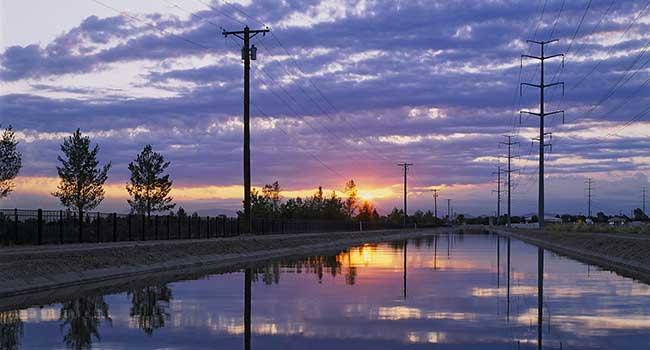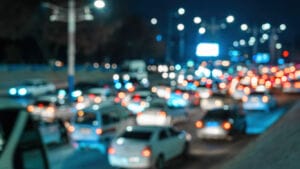When a child first opens a box of Legos, he sees a random pile of attachable pieces. Once his imagination has been sparked, those singular pieces connect together to produce a masterpiece — a town, spaceship or creature. The City of Phoenix, Arizona Forward, SRP and many other public and private entities aren’t much different in their approach to connectivity concerning the Grand Canalscape Project. As Phase Two begins, existing pieces (the canals) are forming new connections between Glendale and Tempe, while improvements along the 12-mile trail system from 1-17 to the Phoenix/Tempe border continue to take place.
Connecting infrastructure and transportation
Most everyone involved in the Grand Canalscape Project agree that its singular greatest asset is connectivity.
By using the Grand Canal system already in place, enhancements are being made from around 15th Avenue to 16th Street and Indian School Road, and close to 36th Street, ending at 40th Street, with additional improvements occurring from 1-17 to 15th Avenue, and picking up again from 16th Street to 36th Street, and then 40th Street to the Phoenix/Tempe border.
If you’re having difficulty visualizing this web of connections, defer to City of Phoenix Community and Economic Development Director Christine Mackay, who explains, “From infrastructure to major crossing intersections, the Grand Canalscape will link city streets and continue through arterial streets for pedestrian activity and connectivity.”
“The canals serve as the backbone for the multi-use, non-motorized transportation system of Phoenix,” adds James Duncan, senior analyst water engineering for SRP. “Not to mention the many other bike paths and trails within 131 miles of the canal system running through exclusively urbanized areas.”
According to Duncan, the Grand Canalscape Project will be the first major paved and improved path to connect downtown Phoenix and Tempe.
The upgrades to the trail system are designed to entice more recreational activity and encourage pedestrian and bicycle activity, among other non-motorized transportation.
“Safe, sensible options for mobility is our goal,” says Monica Hernandez, public information officer for City of Phoenix Transportation Department. Hernandez also emphasizes the benefit of the canals’ various points in close proximity to the light rail.
In addition to maximizing mobility along the Grand Canal, several safety enhancements are being implemented.
“Several crossings throughout the 40th Street, Campbell and Central system will have a number of safety improvements, including push-button, safe crossing features,” says Mark Melnychenko, acting deputy street transportation director for the Transportation Planning and Programming Division for City of Phoenix.
Economic development connections
“From an economic development standpoint,” Mackay says, “any projects that make it more attractive to live, work and enjoy the landscape, the more we want to be involved. The Grand Canalscape Project does that. It creates outdoor environments and entices companies to the area.”
Although some areas along the canal have historically been saddled with a negative stigma, Mackay is confident these impressions will eventually slip away. “We see the value in these areas as the arteries and lifeblood of Phoenix,” she says. “Companies will want to be part of the momentum.”
This is particularly true, according to Mackay, in terms of the Gateway corridor. What was once a thriving area has fallen into disrepair, but with the advent of Grand Canalscape improvements, the area has the potential to be a lively and enticing economic development hotspot.
“There is opportunity for a great office corridor in the Gateway market,” Mackay says. “Around 40th Street, you’ve got Sky Harbor Airport and Gateway Community College, and on 44th, Van Buren and Washington streets, there are opportunities for revitalization and viable land sites available for new development.”
Mackay also stresses the importance of connections in local neighborhoods. “By adding playgrounds, bike paths and parks surrounding the canals, we are reinvigorating and breaking down barriers between neighborhoods,” Mackay says.
Connecting education
A key point of connectivity occurs with the union of four schools intersecting along the Grand Canalscape Project pathway.
“Teachers and students from Brophy College Preparatory, Central High School, St. Francis Xavier Elementary School and Xavier College Preparatory have worked together to form a vision for the canal that would offer students and members of the community a space that fosters and promotes a sense of pride and collaboration,” says Mathematics Department Chair Janet Mambrino, Xavier College Prep’s representative on Arizona Forward’s Grand Canalscape team.
Mambrino has been working with Arizona Forward, SRP, the City of Phoenix and faculty from the ASU Global Institute of Sustainability — among others — since 2013. Student teams have been an integral part of the process, outlining three focus areas of the Grand Canalscape Project:
- Infrastructure (pathways, lighting and bridges)
- Amenities (seating and shade)
- Environment (landscaping)
“The students all agreed that the improvements should cultivate a learning environment that would provide opportunities for students to study the canal system and conduct science inquiries, learn canal system history and the importance of water, water conservation and sustainability initiatives,” Mambrino says.
The four-school junction isn’t the only education-based union along the Grand Canalscape system.
“Another strong connection that may not be discussed as much is ASU and Gateway Community College and Grand Canyon University on the Westside,” Melnychenko says, “where students are apt to utilize the canals.”
Artistically connecting
The beautification aspect of the Grand Canalscape Project doesn’t simply involve the implementation of landscape, lighting and amenities; it incorporates transformation of these initiatives through local art and design.
Duncan says. “We did an inventory of projects last year and calculated that $10 million in commissioned art is featured along the SRP canal.”
This includes specialized signage along the canal explaining its history and items of interest and significance.
“We are working with artist Michael Singer, known for his incorporation of concrete, steel and sandstone elements,” Hernandez says. “We will also be introducing trail markers, shade and benches.”




